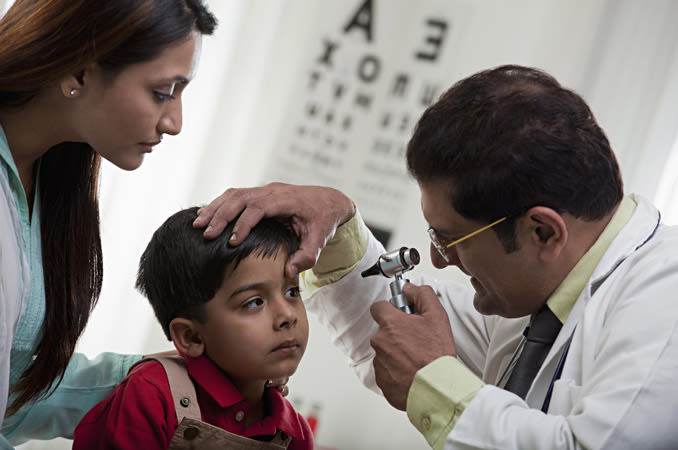Children’s eye care problems at school-age

Vision problems are common among school-age kids. One study finds that one in four school-age children have vision problems that, if left untreated, can affect learning ability, personality and adjustment in school.
School-age children also spend a lot of time in recreational activities that require good vision but playing outside or participating in a team sport may not be as fun if you can’t see well.
Warning signs of vision problems in kids
Refractive errors are the most common cause of vision problems among school-age children. Parents, as well as teachers, should be aware of these 10 signs that suggest that a child's vision needs correction:
Consistently sitting too close to the TV or holding a book too close
Losing his place while reading or using a finger to guide his eyes when reading
Squinting or tilting the head to see better
Frequent eye rubbing
Sensitivity to light and/or excessive tearing
Closing one eye to read, watch TV or see better
Avoiding activities which require near vision, such as reading or homework, or distance vision, such as participating in sports or other recreational activities
Complaining of headaches or tired eyes
Avoiding using a computer, because it "hurts his eyes"
Receiving lower grades than usual
Schedule an appointment with an eye doctor if your child exhibits any of these signs. A visit to the doctor may reveal that your child has myopia (nearsightedness), hyperopia (farsightedness) or astigmatism. These common refractive errors are easily corrected with children’s eyeglasses or contact lenses.
Learning disabilities and vision
Learning disabilities are another concern with school-age children, and according to some estimates, learning disorders affect at least 1 in 10 schoolchildren.
If your child frequently reverses letters while reading or writing, exhibits poor handwriting, doesn’t like reading or has difficulty with it, writing or doing math, consistently confuses his left side for his right side or vice versa, can't verbally express himself or consistently behaves inappropriately in social situations, then seek help.
A multidisciplinary approach is usually the best way to find the cause of learning problems. Consultation with your child's teacher should be the first step. But it's wise also to consult with an eye doctor who specializes in eye exams for children and your pediatrician for additional advice and possible referral to specialists.
Children’s eye exams: How often?
School-age children need an exam every two years if they have no visual problems. But if your child requires eyeglasses or contact lenses, schedule visits every 12 months.
Frequent eye exams are important because during the school years your child's eyeglasses prescription can change frequently.
Vision screenings versus eye exams
Keep in mind that a vision screening performed by your pediatrician or the school nurse is not a comprehensive eye exam. These screenings are designed to detect the possibility of a visual problem, but they do not take the place of a comprehensive eye exam performed at an eye doctor’s clinic.
The best way to make sure your child has the visual skills required to excel in and outside the classroom is to schedule routine comprehensive eye exams with an eye doctor who specializes in children's vision.
When were your child's eyes examined?
Schedule an appointment today. If your child is having trouble in school, it could be a vision issue.
Page published on Thursday, 28 February, 2019






